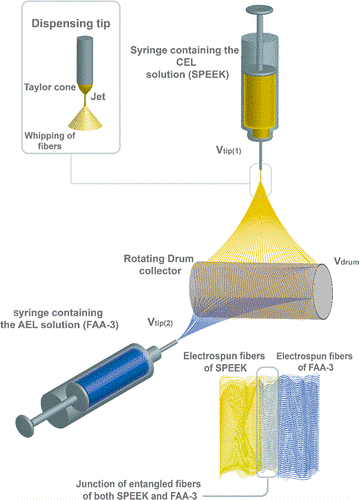Brilliant research needs protection. Like the intricate fibrous weaving method that Emad al Dhubhani developed for bipolar membranes. A possible revolutionary step in fabricating advanced membranes for energy storage. NEW-ttt financed the patenting of this young researcher’s idea.
As laborious and intensive research is put into ideas and designs, desires to protect it can arise quickly. NEW-ttt is financing patent applications in the water sector. One of which is Emad al Dhubhani’s research project into a new way of making highly efficient fibres weaved – electrospun bipolar membranes.
Whether it is for hydrogen production or CO2 capture, bipolar membranes are the go-to method for production of acid and base from water. Two oppositely charged polymer films that are almost impossibly close to each other to help split the water in between. But with a helping substance – a catalyst – implemented in one of the films, the efficiency of such systems can only go so far. Significantly. As the essential catalyst weakens the binding of the two plates and broadens the distance. That gap, though minuscule, is the giant leap forward to cover when it comes to innovation.

And that is exactly what Al Dhubhani challenged. Though to improve the design, he had to take it to another dimension. “By weaving these oppositely charged fibres into a mesh, with the catalyst mixed in – we’ll get the electrospun bipolar membrane” says the scientist. “Although the principle of electrospinning is not entirely new, the way to make it work for different substances is quite the challenge. But we made it work.” And now, financed by NEW-ttt, the invention is ready to start conquering the market. The next generation of bipolar membranes that might just help us store energy, captureCO2 and produce H2.
Interested to become successful too?
Please contact Ronald Wielinga our manager entrepreneurship via +31 6 121 38 876 or r.wielinga@watercampus.nl.